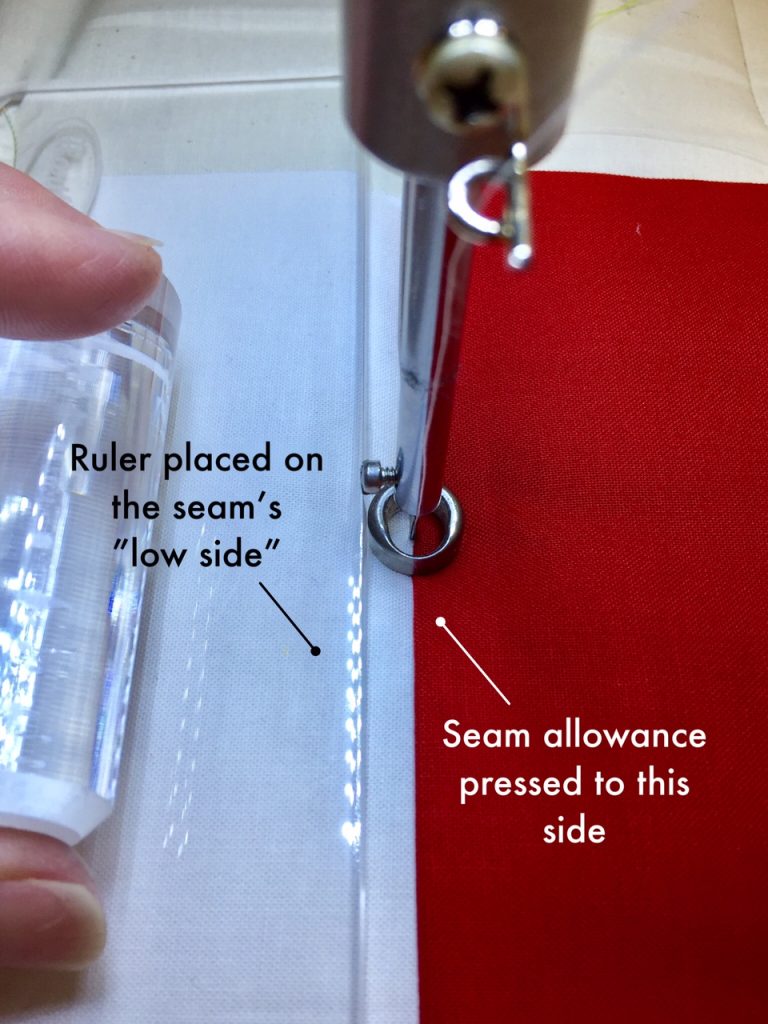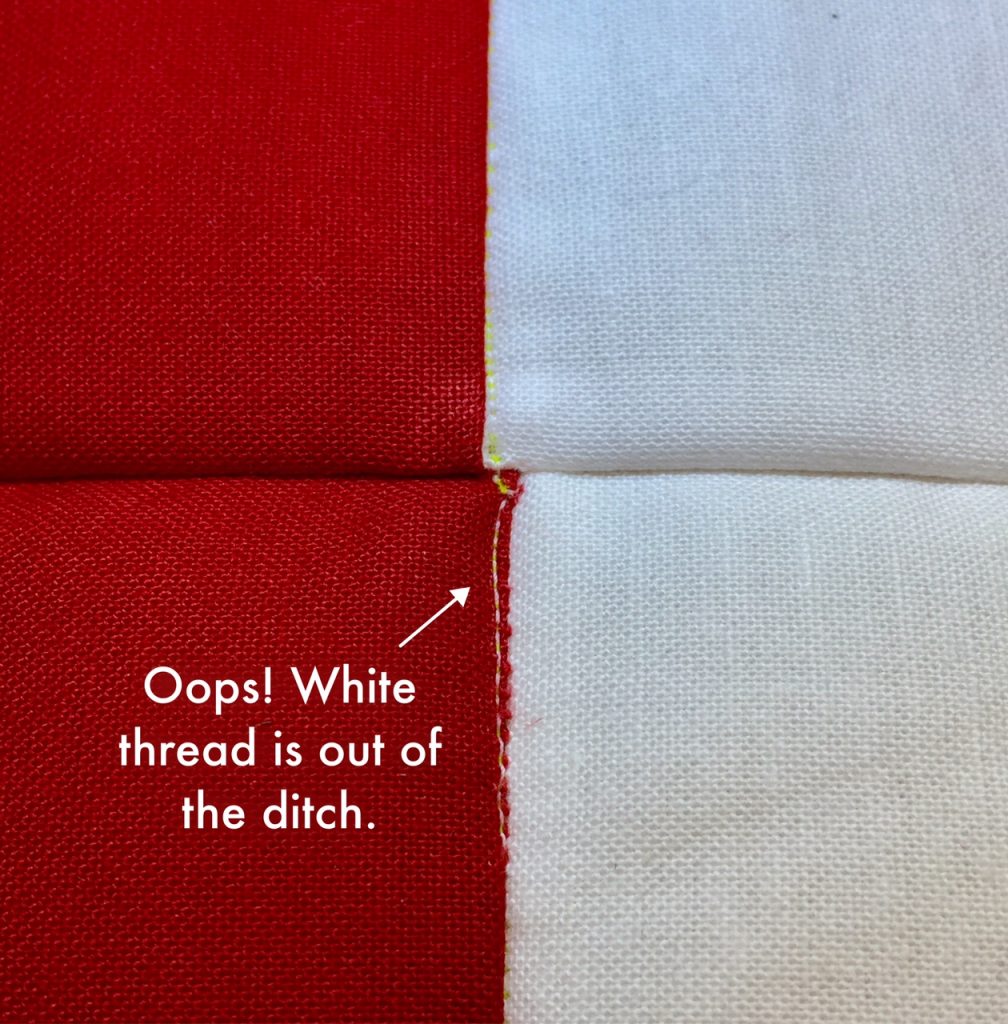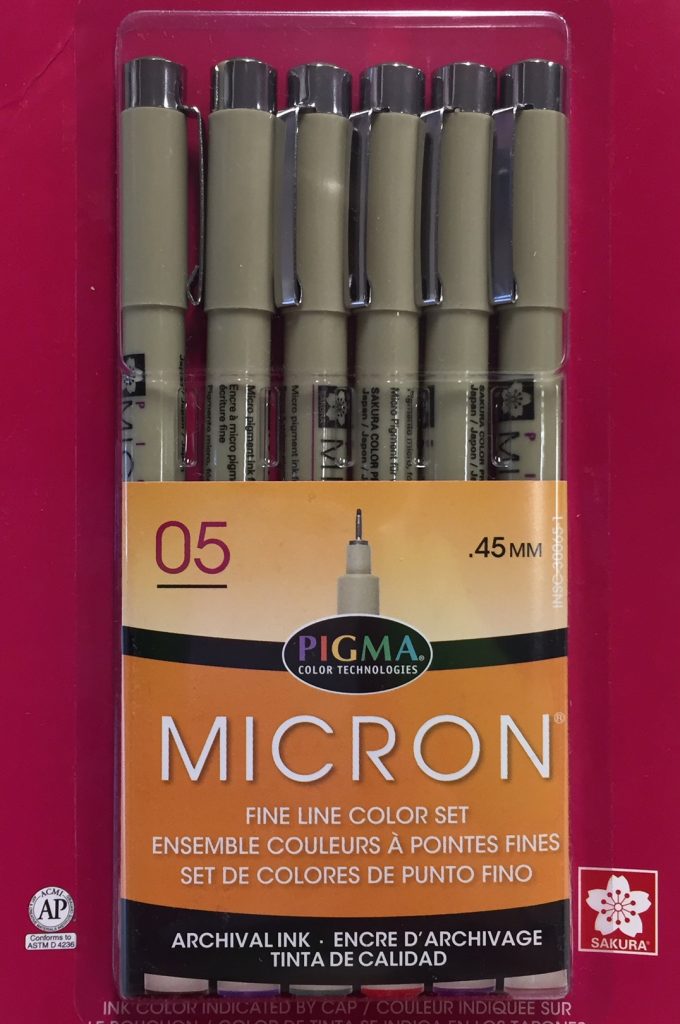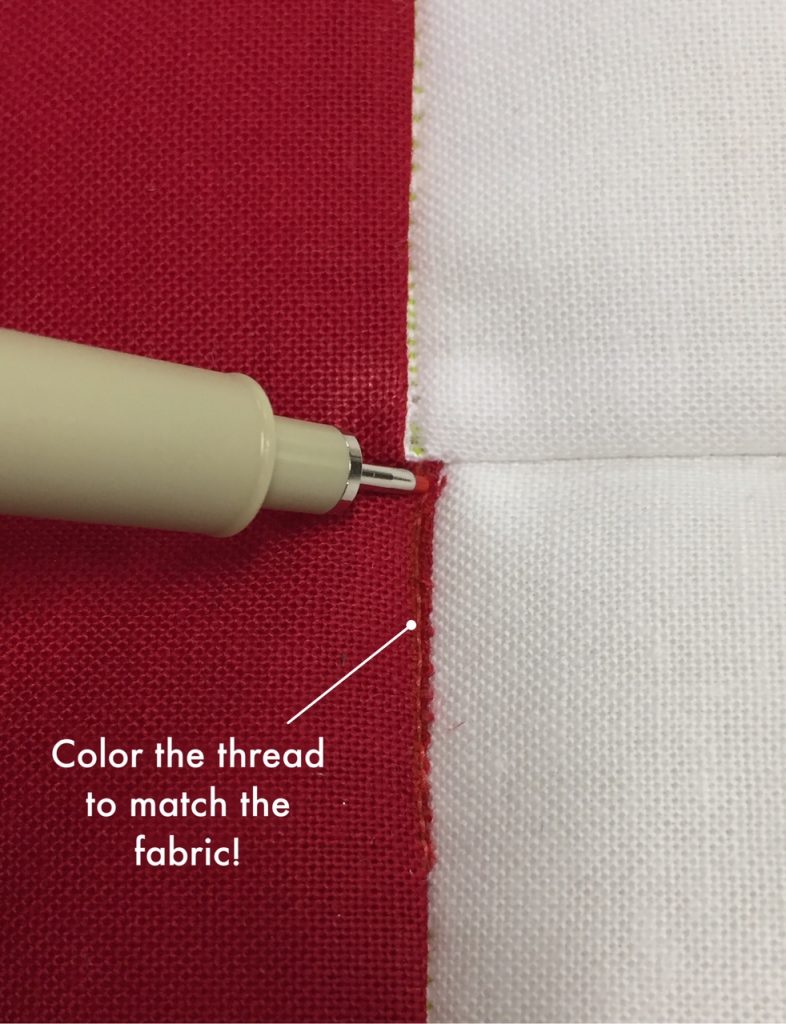Quilt shows – what judges expect [Part 4]
Editor’s Note: This is the fourth article in our series about quilt judge expectations and solutions to the most commonly cited areas for improvement. If you haven’t read the first, second and third articles, we encourage you to do so!
Stitching in the ditch
Do you love it or hate it? Can you take it or leave it? Abbreviated as “SID”, some quilters who are not excited about doing it jokingly claim it means “Stitcher In Distress.” 😉
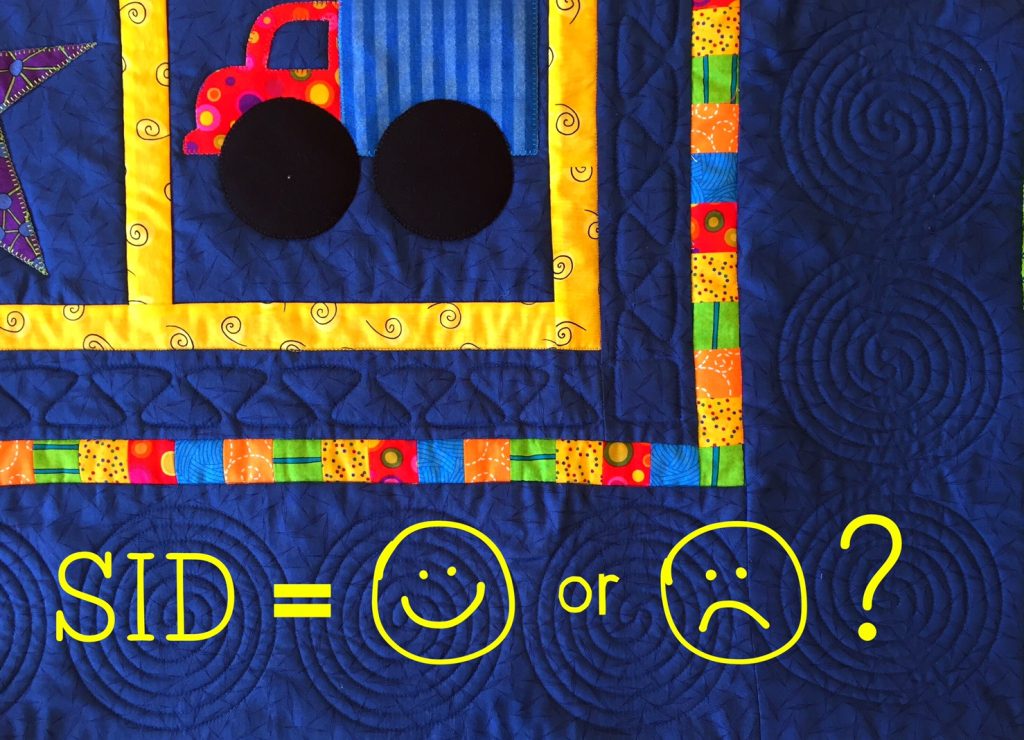
Stitching in the ditch is not a requirement on any quilt, including quilt show entries, but the technique should definitely be in your wheelhouse if you intend to quilt competitively. SID reduces distortion and helps stabilize quilt sections. Your borders may be the straightest ever, but without SID they can look wavy if your border quilting design doesn’t reach all the way to the seam lines. In this case a quilt judge may offer the comment that the quilt “would benefit from SID”.
Since the quilt judge’s job is to critique your work without necessarily offering specific advice on how to fix issues, you may have to deduce just exactly what that means. Basically, stitching in the ditch helps keep your straight lines straight! It defines design aspects of the quilt–your star points look crisper; your sashing looks precise; your borders look like perfect picture frames. It’s like adding eyeliner to make your eyes more noticeable and dramatic!
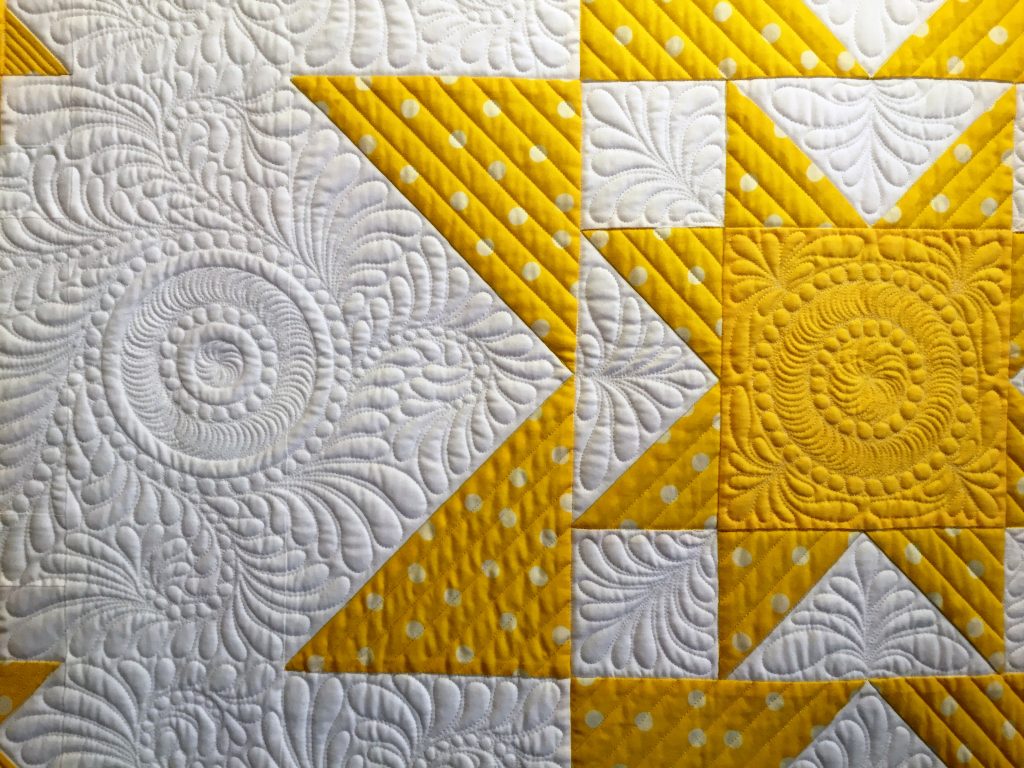
Of course, if you smear your eyeliner across your eyelid or paint on a crooked line, everyone notices. The same is true for stitching in the ditch! Successful SID is nearly invisible, with the stitching confined to the “low side” of the seam allowance, on the fabric opposite of the way the seam is pressed. If the stitching wanders in and out of the ditch, the quilt judge is likely to comment “Stitching in the ditch should stay in the ditch.”
Just like any other quilting technique, your SID accuracy will improve with practice. But here are some additional hints that will help give you a competitive edge:
- Use very fine thread. Bobbin thread (60-weight) is an option, as is silk thread. You’ll also find 100-weight polyester thread available in a rainbow of colors to match your fabrics.
- Use a smaller needle when stitching with thin thread to prevent detracting needle holes.
- If your fabrics have high contrast, consider invisible thread, which will blend well on nearly all colors.
- When using a guiding ruler on a longarm, place the ruler on the “low side” of the seam. This keeps the “high side” fabric from folding over when you press down on the ruler and getting in your way. Then you can snug the needle right up next to the fold of the top fabric for more precise placement.
- If you make a mistake, it may be difficult to remove the stitches without damaging your fabric if you’ve used fine thread. In that case, camouflage may be the best option. Use a non-bleeding permanent pen such as a Pigma marker to “color” the thread a shade to match the fabric! Press the camouflage thread with a warm iron to help set the color.
